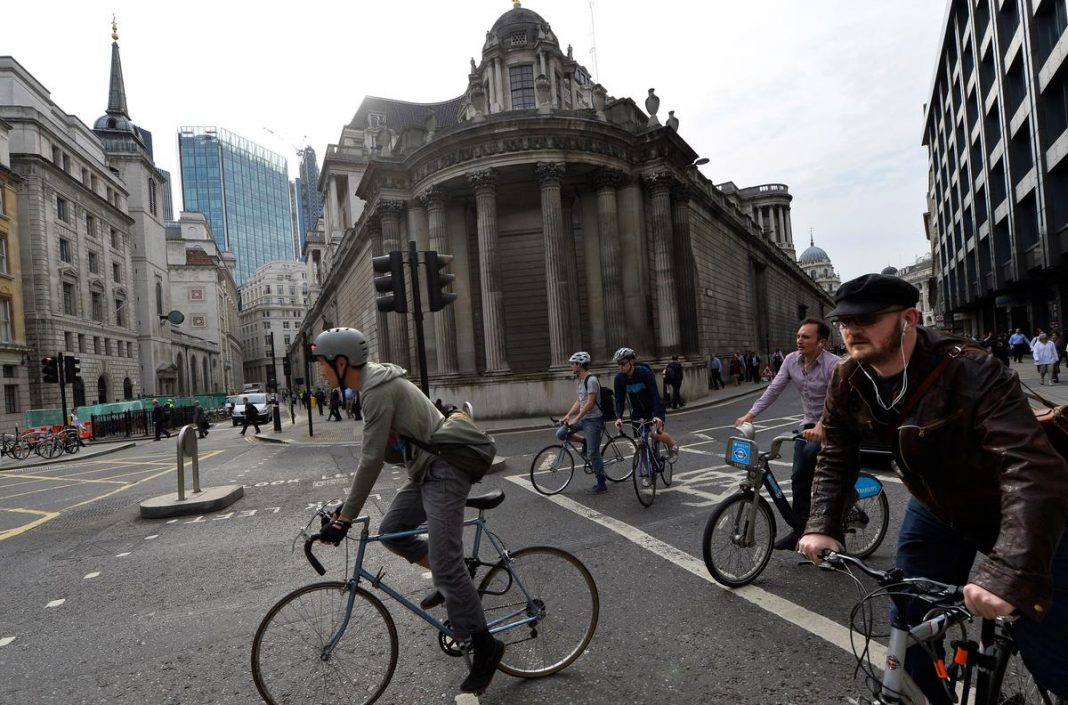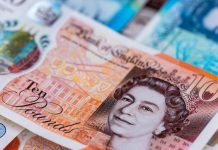Financial markets had seen a 50% chance of a cut, but the Monetary Policy Committee (MPC) split once again 7-2 in favor of keeping Bank Rate at 0.75% with external members Michael Saunders and Jonathan Haskel voting to lower rates.
Sterling jumped by around half a cent against the dollar on the news, though interest rate futures still pointed to the central bank cutting rates soon, probably in May after Governor Mark Carney hands over to his successor Andrew Bailey.
Carney pointed to encouraging signs for the economy in early 2020 but said the BoE was waiting to see if this would be borne out in hard economic data.
“To be clear, these are still early days, and it is less of a case of so far so good, than so far, good enough,” Carney said in comments to reporters following the decision.
Seema Shah, market strategist of fund manager Principal Global Investors, said Carney had seemingly deferred the next policy decision to Bailey.
“Unless economic activity data improves measurably over the coming months, reflecting proof of the so-called ‘Boris bounce’, and interest rate cut is likely to remain on the agenda for 2020,” Shah added.
In a policy statement, the central bank came up with downbeat economic growth forecasts, saying Brexit would weigh on growth from next year, and it kept the door open to lower rates if the recent signs of a pick-up prove to be illusory.
“Policy may need to reinforce the expected recovery in UK GDP growth should the more positive signals from recent indicators of global and domestic activity not be sustained or should indicators of domestic prices remain relatively weak,” the BoE said in its quarterly Monetary Policy Report.
But if growth gathers pace as suggested by upbeat business surveys since Prime Minister Boris Johnson’s unexpectedly emphatic Dec. 12 election win, “some modest tightening” of policy might be needed further ahead, the BoE said.
BREXIT FRICTION
The central bank no longer specified that such tightening would be “limited and gradual”, a long-standing piece of BoE guidance that dated back to a time when a more rapid pace of rate hikes might have looked likely.
The central bank estimated Britain’s economy did not grow at all in the final three months of 2019, a time of political uncertainty when parliament forced a delay to Brexit and a snap election raised the prospect of a change in government.
This will have a knock-on effect on economic growth for 2020, which the BoE forecasts will be just 0.8% for the year as a whole, the slowest since the financial crisis.
Growth is seen recovering over the year, however, reaching an annual rate of 1.2% by the final quarter of 2020.
Johnson’s victory means Britain will formally leave the EU at 2300 GMT on Friday, starting an 11-month transition period during which Britain needs to negotiate a longer-term trade deal with the EU or face tariffs on its exports from 2021.
Even if this deal is reached, the BoE said it now penciled in increased trade frictions from the start of 2021, contributing to a reduction in its estimates of Britain’s long-term growth potential.
Lower immigration and weaker business investment would also weigh on the economy, it added.
Investors who expect a BoE rate cut soon may also be encouraged by the central bank’s subdued inflation forecast.
Inflation is seen staying below the BoE’s 2% target over the next three years if rates stay at 0.75%. BoE forecasts based on market expectations of a cut in rates to 0.5% this year show inflation rising slightly above target.






























